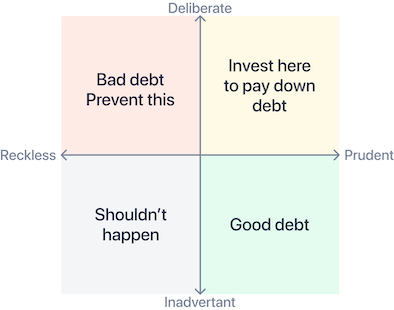2021 samples
Content design scorecard
Atlassian merged their content design department with their product design department into what they call "experience design". In doing so, they asked product design managers to start being accountable for the quality of content across their product suite, and help grow the careers of writers.
This brave, new world helps to raise the visibilty of content work at Atlassian. But, it also brought about some new challenges for product design managers who knew little or cared little for the content craft. We experienced a growing need for management best practices and tooling to help upskill our new experience design managers.
I stepped up and created a number of tools, including content prioritization frameworks and plays, rituals and dashboards, and a easy-to-use scorecard that helps design teams evaluate the quality of their content work. Many of these tools are now standard operating guidance available through Atlassian's DesignOps team. And, I like to think that I've helped a few managers expand their craft knowledge and confidently grow the designers that report directly to them.
Check out the minified content design scorecard.
Compass content strategy
This year, I was asked to help launch a new DevOps product for Atlassian called Compass, a software component registry. The biggest challenge here was to extend my domain knowledge from the agile planning space into the full development, delivery, and operations "loop".

As a new product, Compass presented me a blank slate to drive strategy end-to-end. It was an amazing opportunity to test my skills, working with senior leadership and execution teams to explore and define how content pushes the goals of a fledgling product. And, even further, it asked me to lead a small content team to deliver on UI/UX content design, conceptual modelling and terminology, and supporting end-user and developer documentation.
I had about 12 weeks before the product launched to an alpha set of customers. What I delivered in the end included guiding principles, editorial and delivery strategies, operations and rituals, goals and measurements, feedback collection, and a whole lot of internal influence to get our teams excited about content.
The entire workload is far too broad to include here. But, if you're curious about my process, check out this stripped down version of the gameplan I used to keep us on track for delivery.
Experience debt thought leadership
I spent some time this year thinking about experience quality and debt, a big topic for Atlassian since experiencing massive growth and scaling problems. While many of my colleagues jumped to create new frameworks and solutions, I took some time to learn from our engineering counterparts who have been standardizing technical and code debt metrics and methods.

My explorations culminated in a series of internal blog posts meant to help codify and measure the experience debt our cloud products have accumulated over time. And, I was asked to condense these into an external thought leadership piece to help other designers across the industry.